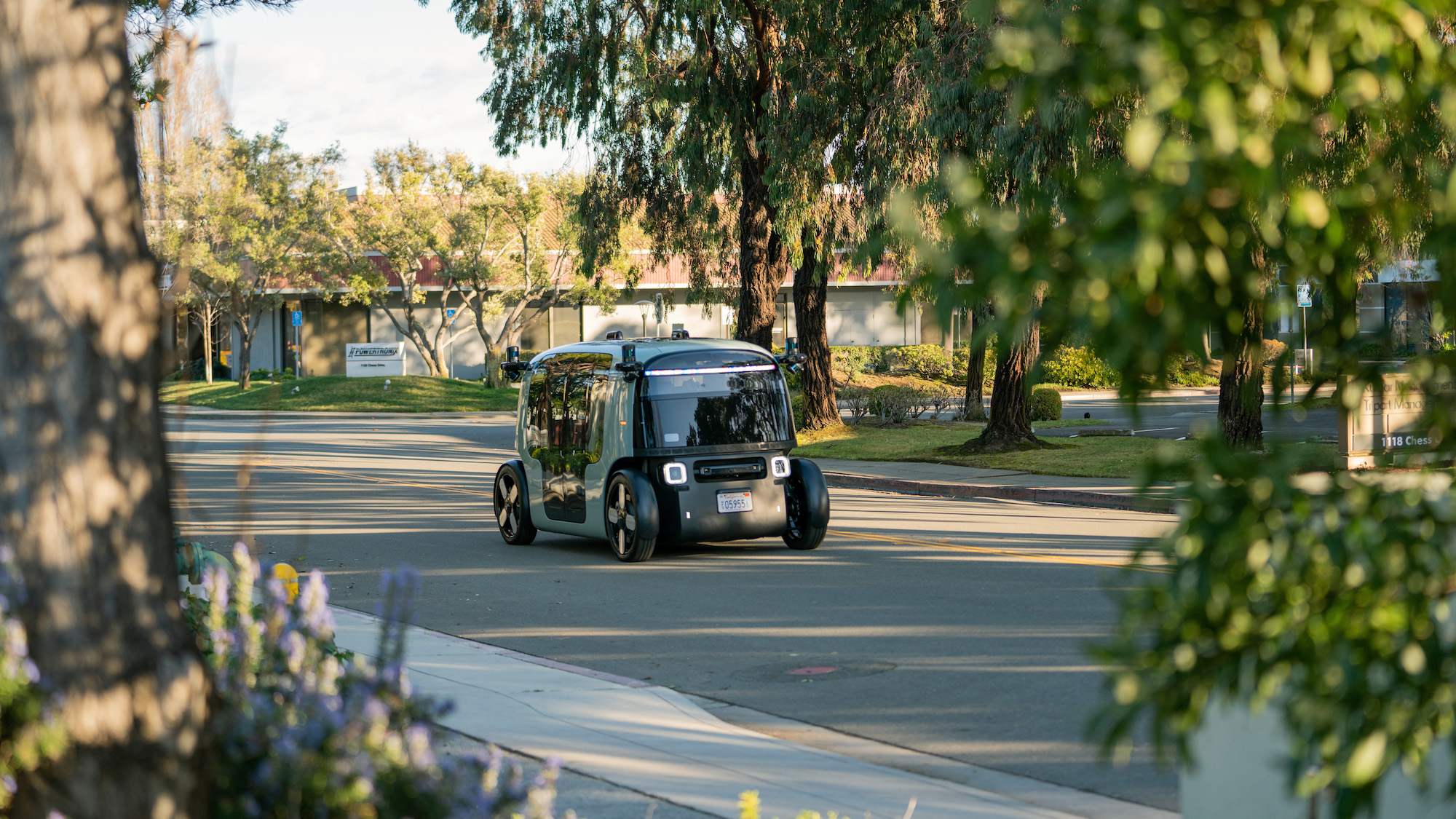

Zoox, a self-driving car company owned by Amazon, announced yesterday that it had successfully tested its futuristic-looking robotaxi with passengers on public roads in Foster City, California. The company claims that this is the first time “a purpose-built autonomous robotaxi without traditional driving controls” (you know, elements like a steering wheel and pedals) has transported real humans on open public roads. Unfortunately, if you’re hoping to flag down one of these vehicles, there’s a catch—for the foreseeable future it’s for Zoox employees only.
It’s rare these days to see some positive news about driverless cars. After a rollercoaster few years, the current situation has mostly been bad news for the highly speculative, typically miles-from-turning-a-profit autonomous-vehicle industry. In the past few months, Ford and Volkswagen-backed Argo AI shut down, Alphabet-owned Waymo laid off a number of workers, and self-driving truck company TuSimple cut its workforce by 25 percent. Meanwhile, GM-owned Cruise is under investigation from security regulators even as it rolls out its robotaxi service, and at the Super Bowl last weekend, a 30-second ad from The Dawn Project called on the DOT to ban Tesla’s Full Self-Driving (FSD) system. Last year, TechCrunch went so far as to declare that “self-driving cars aren’t going to happen,” and with the recent spate of news, it’s easy to agree with that prediction.
[Related: Pete Buttigieg on how to improve the deadly track record of US drivers]
But into this news cycle rolls the cutesy toaster-like robotaxi with plans to merrily ferry people about in the California sun.
Zoox’s electric robotaxi looks different from a typical vehicle. By removing the steering wheel, gearstick, and other manual controls, Zoox has been able to reimagine what a vehicle can look like. It seats four people facing each other, like in an old horse-drawn carriage, minus the horse. Plus, with no need for a driver, it doesn’t really have a front or a back, so it can drive bi-directionally. It has four-wheel steering to make it easy to maneuver through narrow streets and into tight curbside pick-up spots. Zoox has also packed in a huge 133 kWh battery so it can keep trundling all day. (For reference, a Tesla Model S Dual Motor has a 100 kWh battery while the base Model 3 has a 60 kWh battery.)
[Related: Why this Amazon-owned company is bringing its autonomous vehicles to Seattle]
Of course, manufacturing a cool concept vehicle is very different from actually operating a robotaxi service in the real world. To get to the point where the California Department of Motor Vehicles would let it operate on the state’s public roads, Zoox had to complete rigorous testing on private and semi-private roads. Even without traditional controls, Zoox claims its vehicle meets the Federal Motor Vehicle Safety Standards (FMVSS)—though admittedly, it says that it “self-certified.”
February 11 marked the start of a planned robotaxi shuttle service for Zoox employees between the company’s two main office buildings in Foster City. The route is roughly a mile and requires the robotaxi to navigate left and right turns, traffic lights, cyclists, pedestrians, other vehicles, and all the general chaos of California roads at speeds of up to 35 mile-per-hour. Since the service will only be available to full-time workers, Zoox won’t actually charge for it—and there is no firm timeline for when it will expand to other routes or the general public. For that, Zoox would need additional permits from the California DMV. In other words, it’s still unclear if robotaxis will be a real thing that happens or if progress will continue to stall.
